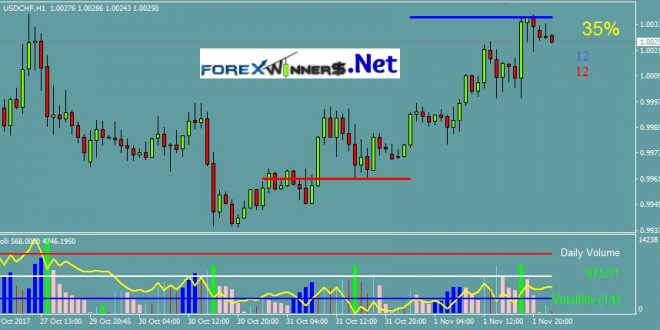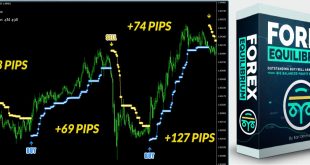Innovation volume analyze AlievTM Volli indicator
Volli indicator developed by a unique system DVZ (dynamic volume zones). In the seventh version also added a unique development correlations of currencies. To understand the trade by Indicator necessarily to be familiar with the method of market analysis PRICE ACTION and VSA. By default indicator settings are for the H1 period.
1) The arrows. Drawn on the current candle. On the current candle arrow can disappear. When candle closed arrow remains on the chart. Arrows draws when price go out from the zone (touch). The arrow is designed to make attention to the situation on the chart. There are alert when you see arrows. It is recommended not to reopen an order and not open an additional order if a new arrow in a row one way worse and costs for the previous one(for example when the down arrow costs 1.3020, and previous was priced at 1.3040).
2) Zone. Are drawn on the basis of the largest volume. You can choose from their number, type, whether to show the zone for the current period current period area has its own color, can repaint. Different color zones this indication was volume bullish or bearish. For visual convenience color unidirectional alternating volumes. The zone is intended to identify supply and demand.
When the price is suitable to the area, it is recommended to watch the behavior of prices. I.e. how many times the price of the retouch of the zone, how many ran it as it happened (or drastically slow). The combination of zones in one place can be thought of as flat. It is recommended when analyzing for example H1 period to assess the situation on the M5, M5 must not have opposite signal to H1.
3) Candles in one side of the graph by default have the appearance of the blue and red squares at the top of the indicator window appear after the minimum specified number. You can change the view and location (top indicator window or on volumes). Designed to monitor changing of trend. For example, immediately after a few candles down go several candles up a sign reversal upwards. Can also be used as the identifier for the trend. If in the period where several candles consecutives appears a large amount, it’s likely that trend will continue. Very often the number of candles up and down are equal for a certain period.
4) Dividing lines. You can change the view. You can include instead of lines filled with certain color zone. Is used to separate the graph window into zones with small, medium and large volumes. Measured in% in relation to the largest volume.
5) Increasing volume. You can choose after how many bars in a row growing volumes of allocating them. This is the default Blue histograms. Used for monitoring plot where volumes grew. This is usually where price plots unfolding.
6) Falling volumes. You can choose after how many bars in a row of falling volumes of allocating them. The default is white. Used for monitoring plot where falling volumes. Usually in such areas it is advisable to close the order.
7) The most bullish volume. By default, has a bright green color. Shows where for a certain period was the largest volumes of splash on bullish candle.
8) The most bearish volume. By default, the color is red. Shows where for a certain period was the largest volumes of splash on bearish candle.
9) Similar volumes by default are yellow. Show where the plots where similar volumes.
10) OnBalanceVolume. The indicator OBV superimposed on the indicator window in% ratio. Can be used as an oscillator. You can also see this pattern as a double-tap some level indicator window or zones in the indicator window.
11) Correla. indicator window draws a correlation of Exchange calculated from all 28 pairs. Layout and location can be changed. Is used as an input filter, for example, if you pair GBPUSD decided to make a BUY, and the correlation data indicate that GBP significantly weaker for USD, it’s best not to open Bai.
12) Name of the indicator on the main chart. Draws the indicator name. Every tick changes the color of a particular symbol. Can be used for visual perception of ticks speed.
Forex trading using VSA (Volume Spread Analysis) :
Most traders are familiar with technical and fundamental analysis. There are several ways to use these two methods to analyze the forex market, but, in general, fundamental analysis examines the reasons that the market moves and technical analysis tries to find out when the movement will occur. There is a third approach for analyzing stock market prices and forex prices. It combines the best of both fundamental and technical analysis to simultaneously respond to the “why” and “when” questions; this methodology is called VSA (volume spread analysis – the analysis of differences in volume).
 Forex Winners | Free Download Downlod free trading sysrems , indicators and forex E-books
Forex Winners | Free Download Downlod free trading sysrems , indicators and forex E-books

